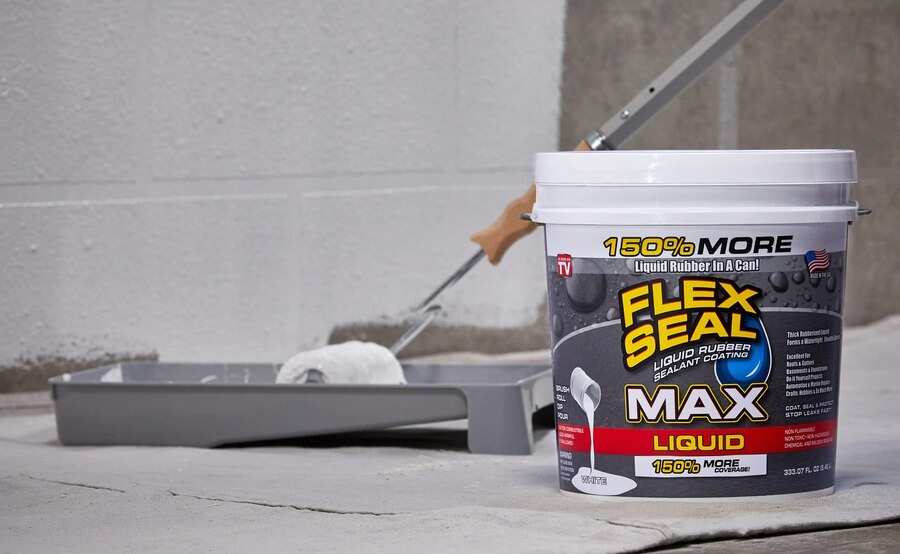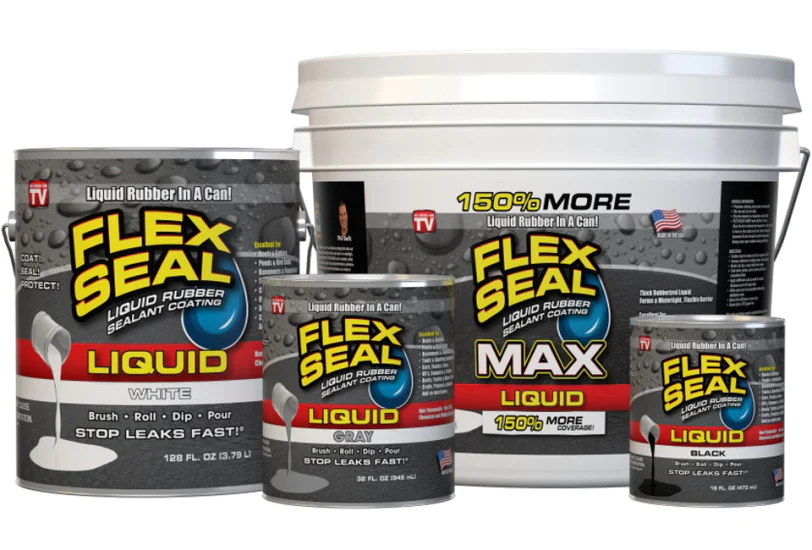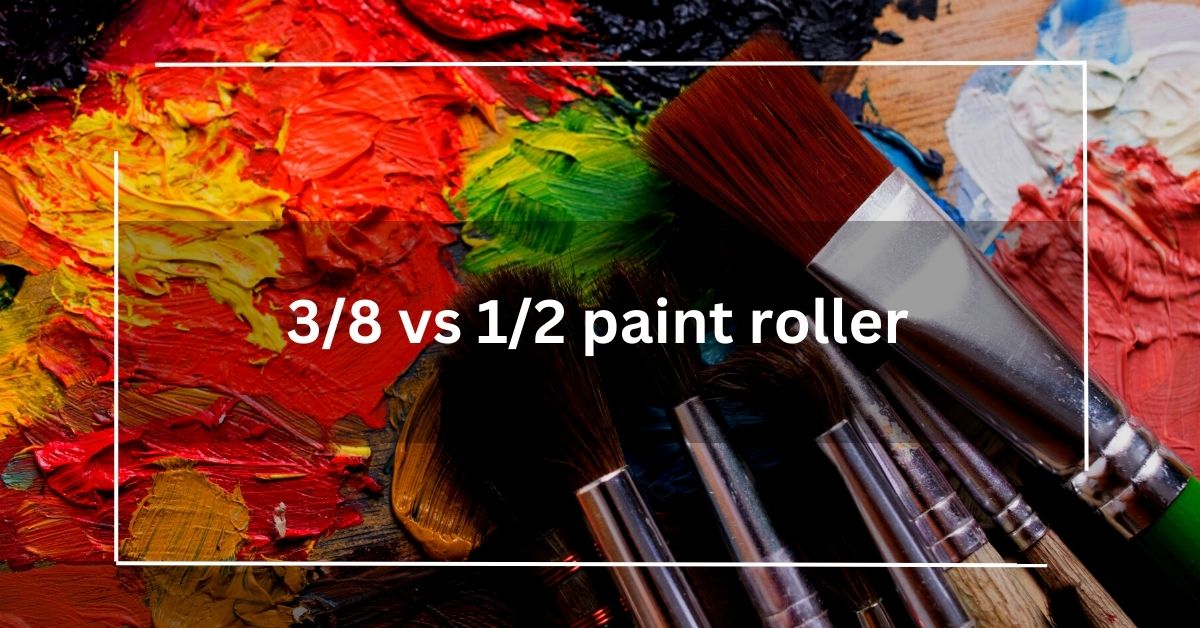In the world of home repairs, versatility is key. But what happens when you need to blend function with aesthetics? Enter the question: Can you paint over Flex Seal? The answer might just unlock a world of possibilities for your next DIY project.
Yes, you can paint over Flex Seal after it has fully cured and is clean and dry. However, it’s important to properly prepare the surface by cleaning it and allowing the Flex Seal to fully cure before applying paint.
Before painting, you should lightly sand the product’s surface to ensure good adhesion. You must first allow the Flex Seal to cure for 24 hours and then scuff the surface before you start painting.
Which Flex Seal Family Of Products Can Be Painted Over?
All Flex Seal products, including Flex Seal Liquid, Flex Seal Spray, Flex Seal Brite, and Flex Seal Tape, can be painted over after they have fully cured and the surface is clean and dry.
However, it’s important to follow proper preparation steps, such as cleaning and priming the surface to ensure proper adhesion and a smooth finish.
Before painting, the surface should be clean and dry, and any excess Flex Seal should be removed.
How To Paint Over Flex Seal?

It is very important to follow the correct procedure to paint over a flex seal.
Here Are The Steps To Paint Over Flex Seal:
1. Wait for the Flex Seal to fully cure:
This typically takes 24 hours for Flex Seal Liquid and a few hours for Flex Seal Spray.
2. Clean the surface:
Use soap and water to clean the surface and remove any dirt, debris, or oil. Allow it to dry completely.
3. Sand the surface:
Lightly sand the surface with fine-grit sandpaper to rough up the surface for better paint adhesion.
4. Apply a primer:
Apply a high-quality primer for rubber or plastic surfaces. It will help the paint adhere properly to the Flex Seal.
5. Paint the surface:
Apply the desired paint color in thin, even coats, following the manufacturer’s instructions.
6. Allow the paint to dry:
Allow the paint to dry completely, usually for 2-6 hours, depending on the type of paint and conditions.
7. Apply additional coats of paint as needed:
If necessary, apply additional coats of paint until you achieve the desired color and finish.
By following these steps, you can paint over a flex seal which gives long lasting results.
Should You Paint Over Non-Paintable Flex Seal?
Flex Seal Liquid and Flex Shot are specially formulated to be waterproof and watertight, so painting over them will not increase their effectiveness.
Painting over a non-paintable Flex Seal can create an uneven and unattractive finish, as the paint may need to adhere properly to the surface.
If a better finish is desired, it is best to use paintable Flex Seal products such as Flex Seal Paint or Flex Seal Clear.
Also Read: Why Do We Hate Painting Resin Models? || Reasons
Can I Change The Color Of The Flex Seal?

Once the Flex Seal has fully cured, and the surface has been properly prepared, you can apply a paint designed for rubber or plastic surfaces. It will allow you to achieve the desired color and finish.
Remember that it’s important to follow the manufacturer’s instructions for the Flex Seal product and the paint and to properly prepare the surface to ensure proper adhesion and a smooth finish.
Flex Seal may be affected by UV rays and other weather conditions, which could impact the color of your paint job over time.
What Paint Will Stick To Flex Seal?
Paint designed for rubber or plastic surfaces is most likely to stick to Flex Seal. This type of paint is formulated to adhere to non-porous surfaces, such as Flex Seal, and provides a durable, long-lasting finish.
However, painting over a non-paintable flex seal can also be done with latex or oil-based paint, depending on the surface you are painting on.
Some examples of paint used on rubber or plastic surfaces include epoxy paint, silicone paint, and urethane paint.
It’s important to follow the manufacturer’s instructions for the Flex Seal product and the paint and to properly prepare the surface to ensure proper adhesion and a smooth finish.
What Colors Are Available For Flex Seal?
Flex Seal is typically available in black, white, and clear. However, the exact colors available may vary depending on the product and retailer.
Flex Seal is painted over with paint designed for rubber or plastic surfaces to achieve any desired color. It allows you to match the color of the Flex Seal to the surrounding surface or to achieve a specific look.
Before painting, it’s important to properly prepare the surface and follow the manufacturer’s instructions for both the Flex Seal product and the paint.
How Long Before You Can Paint Flex Seal?
The time before you can paint Flex Seal depends on the type of Flex Seal product used and the conditions it is exposed to.
For Flex Seal Liquid, it typically takes 24 hours for the product to fully cure. Flex Seal Spray may take a few hours for the product to fully cure, depending on the conditions.
It depends upon the applied coating’s temperature, moisture, humidity, and thickness. When there is no moisture and humidity, It may take just a few hours to dry.
When the seal is fully cured, it is important to remove the excess Flex Seal, clean the surface with soap and water, sand it, and apply a primer designed for rubber or plastic surfaces.
What is the best type of paint to cover over Flex Seal?
The most suitable paint to cover Flex Seal is acrylic or latex paint. These options effectively adhere to the rubberized coating of Flex Seal, ensuring proper coverage.
Before painting, ensure the Flex Seal surface is clean and dry, allowing it ample time to cure. It’s worth noting that oil-based paints might not adhere as effectively, so it’s preferable to opt for water-based acrylic or latex options.
Testing a small inconspicuous area before proceeding with the full paint job is a prudent approach to ensure the desired results without compromising the Flex Seal’s integrity.
Conclusion
In conclusion, Flex Seal is painted over once fully cured, and the surface has been properly prepared. After the surface is prepared, paint designed for rubber or plastic surfaces is applied to achieve the desired color and finish.
For proper adhesion and a smooth finish, waiting for the Flex Seal to fully cure, clean the surface, sand it, and apply a primer specifically designed for rubber or plastic surfaces is important.
FAQs
1. What is Flex Seal?
Flex Seal is a versatile rubberized coating used for waterproofing and sealing. Applied as liquid, it forms a flexible barrier against leaks and damage on various surfaces like roofs and pipes.
2. What Paint Will Stick to Paintable Flex Seal?
Water-based acrylic or latex paint is recommended for use on paintable Flex Seal. These types of paint adhere well to the rubberized surface, ensuring a durable and attractive finish.
3. Can Flex Seal be Stained?
No, Flex Seal is not designed to be stained. It’s a rubberized coating that is primarily used for sealing and waterproofing. Attempting to stain Flex Seal may not yield desired results, as it’s not formulated to absorb or hold traditional stains like wood or fabric.
4. What is the Expected Lifespan of Flex Seal?
The lifespan of Flex Seal varies based on usage, surface, and environmental factors. When applied correctly, it can provide lasting waterproofing and sealing, often lasting several years before potential reapplication is needed.
Video Guide
Also Read
- How Heavy is a 5 Gallon Bucket of Paint? – Unveiling the Weighty Details
- Behr Paint Colors || Understanding Interior Design



